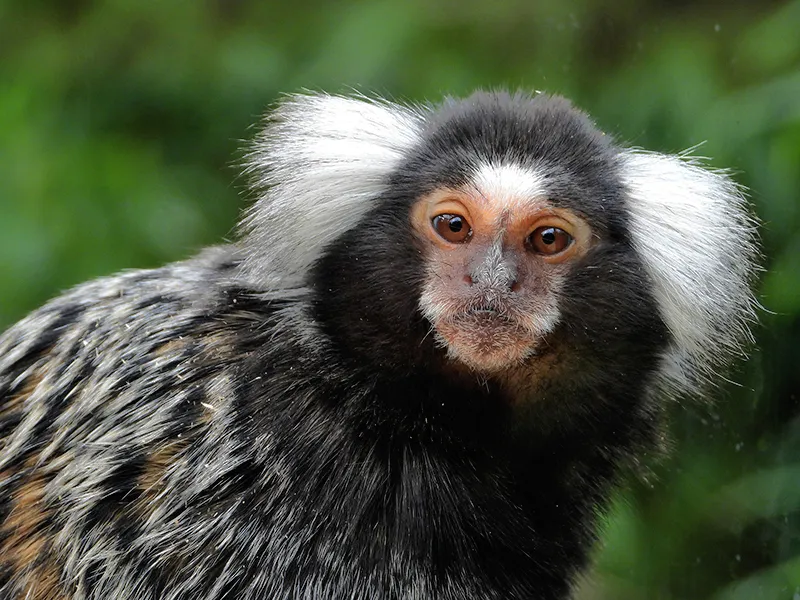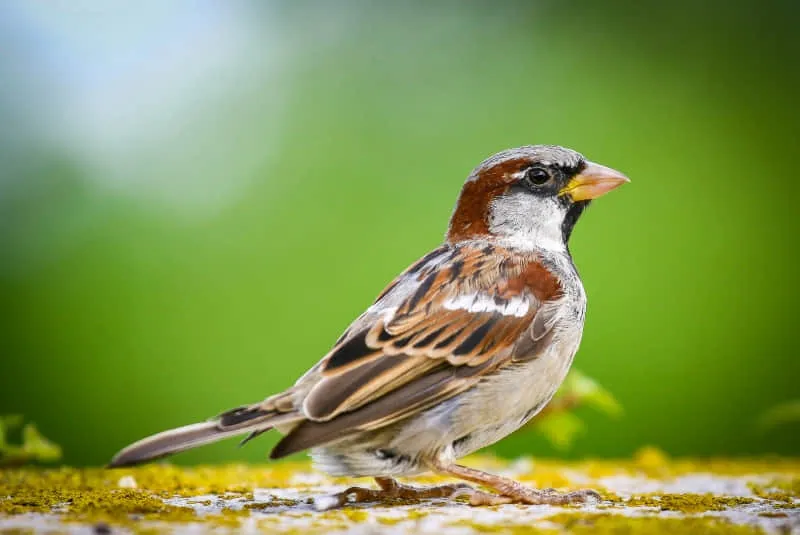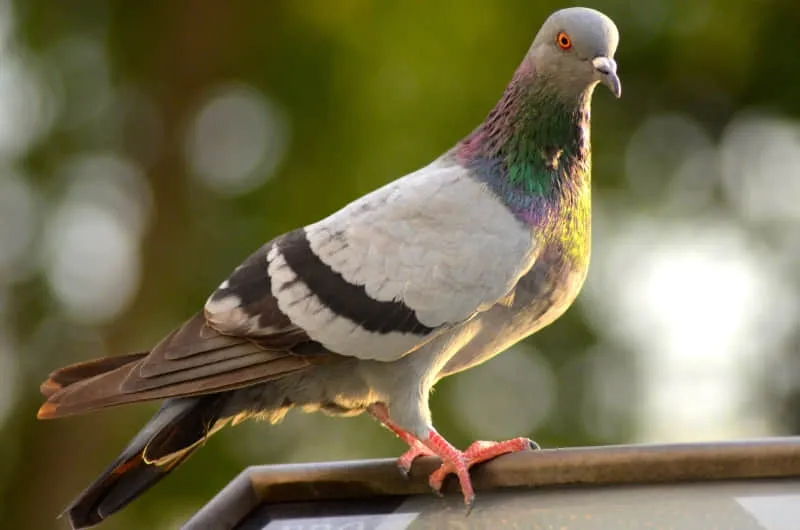Exotic and invasive animals in Brazil
During the history of the earth, animals and plants dominated from small ecological niches to large regions. It is natural that the area of occurrence of certain species increases or decreases over the years, and may advance even on whole continents. A great example was when several animals from North America came to South America and vice versa — such a change became known as the great exchange of the Americas.
This natural turnover is gradual and can take hundreds of years. However, human activities have been accelerating the introduction of exotic animals into almost every regions of the world.1 Such is this acceleration that is currently considered a global crisis, generating major negative impacts on ecological balance, society, culture and economy.
Exotic or introduced species

An exotic or introduced species is a plant or animal not native to the region, a species that naturally lives outside its current range, but that arrived there through human activity, intentionally or accidentally, directly or indirectly.
An exotic species is not necessarily a species from another country, the white-tufted marmosets and black-tufted marmosets , for example, are endemic species, but they became exotic when they inhabit the South and Southeast of the country — when their natural distribution area is mainly in the Cerrado and Caatinga in the Northeast2.
Invasive species
An invasive species differs from an introduced one by causing damage to native species3 and because it spreads quickly due to the abundance of food, and the lack of predators, dominant competitors and diseases, rivaling native species for food or space. In some cases, an introduced species can also reproduce with members of native species, producing hybrids and driving pure specimens to extinction.
The Orange cup coral , for example, it was accidentally introduced and became invader to dominate integers and end regional diversity — mainly because it is an extremely resistant species and not having natural predators.
Thus, invasive species can cause important changes in the local ecosystem, endangering diversity, affecting agriculture, other natural resources used by humans and the health of people and animals.
Invasive animals and plants are the second largest cause of the extinction of species on Earth, leading hundreds of species to extinction and directly impacting biodiversity, health and economy 4. By 2019, 365 potentially invasive exotic species were identified in Brazil, 54% composed of animals and 46% by plants5.
Accidental introduction
One of the main causes of accidental introduction is transoceanic trade. It can occur when animals such as rats, arachnids and insects are accidentally transported to ships, when marine species are released outside their natural locality with ballast water or after settling in ships-as is the case of Orange cup coral .
Domestic geckoxes were also accidentally introduced. Despite being good biological controllers in cities, helping to eliminate pests such as mosquitoes, cockroaches and Recluse spiders , the species can be considered invasive by endangering the biodiversity of certain locations6.
Many animals are brought to be raised only in captivity such as food or for study, but are accidentally introduced when they escape to nature — and can have various consequences
One of these cases is that of Apis Mellifera the most common bee in Brazil , which came to the country to be used as an object of study of genetic improvement to increase the honey production of the country. However, after an accident, the bees escaped and reproduced with another subspecies creating hybrids. Although these hybrids are the main and most populous honey producers in the country, they are highly aggressive and compete for food with native species7 8.
Intentional introduction

Perhaps the biggest motivation for intentionally introducing a species is economic. Introduced species can become such a common part of an environment, culture, and even diet that little thought is given to their geographic origin.
Chickens, pigs, cows, carp, tilapia, sheep, goats, horses, sparrows and many other animals and plants are, in fact, species that were intentionally introduced into the country for economic purposes.
Dogs, cats, various birds, fish, and other domestic animals have all been intentionally introduced as an important means of supporting recreational activities and enhancing human pleasure. However, these animals can also be considered invasive when they feed or compete for space with native fauna.9.
Ilha da Furtada in Rio de Janeiro, for example, is dominated by around 750 wild cats introduced in 1950. Currently, cats have become a local pest, altering the quality of the soil and unbalancing the fauna.10.
The African giant snail (Achatina fulica), was brought to Brazil in the 1980s to be sold at a lower price than escargot, but, as it was not popular with the population, it was released anywhere. They have adapted and are currently causing great damage to the environment and agriculture.
Some other examples of intentionally introduced animals are the fat turtles, buffalo, pigeons, rabbits, ducks, swans, geese, among others, of which many have become invasive species that make it difficult for several native species difficult.
Although intentional introduction is not always bad (when controlled), inserting exotic animals for recreational and pleasure purposes is mainly motivating for animal trafficking. Both traffic and exhaust or deliberate release cause environmental imbalances and can, over time, lead hundreds of species to extinction.
Human health

Invasive species have not only caused ecological damage and economic losses, but also affect human health, spreading diseases such as allergies and viruses that can be fatal.
Pigeons, rodents and insects such as mosquitoes, fleas, lice and other pests can serve as disease transmitters and reservoirs. Throughout history, epidemics such as malaria, yellow fever, typhus and bubonic plague have spread through contact with these animals11.
In addition to the possibility of transmitting disease directly, efforts to control these plagues may have long -term public health implications. For example, pesticides applied to plantations to exterminate a particular plague can pollute the soil, food and water, negatively affecting the environment itself and all who ingest such food, whether people or animals12.
The increase in tourism and trade accelerates the dissemination of invasive species between different ecosystems, regions and countries, which represents one of the main causes of biodiversity loss and species extinction, alongside climate change, habitat loss, from over-exploration and pollution.
These species affect the provision of environmental services, the economy, health and conservation of natural and genetic heritage. The Ministry of the Environment acts in the creation and definition of norms, policies, strategies and initiatives designed to prevent introduction and control the invasive species that threaten native species, habitats and ecosystems 13.
Other government agencies also perform important actions to avoid establishing these species throughout the national territory. Since 1998, the introduction of exotic animals without official authorization is considered an environmental crime in Brazil (Federal Law 9.605/1998)3, yet the work to prevent the proliferation of these species is still continuous.
References:
-
MOONEY, H. A.; INTERNATIONAL COUNCIL FOR SCIENCE. SCIENTIFIC COMMITTEE ON PROBLEMS OF THE ENVIRONMENT. Invasive alien species: a new synthesis. Washington, Dc: Island Press, 2005. ISBN: 1559633638, 9781559633635 ↩︎
-
Agência Brasil: Mais de 100 animais brasileiros são considerados invasores no país ↩︎
-
Ribas — Consultoria Ambiental — Espécies nativa x exótica ↩︎
-
Ibama — ESTRATÉGIA NACIONAL PARA ESPÉCIES EXÓTICAS INVASORAS Projeto Pró-Espécies: Todos contra a extinção ↩︎
-
Rocha, C. F. D., Anjos, L. A., & Bergallo, H. G.. (2011). Conquering Brazil: the invasion by the exotic gekkonid lizard Hemidactylus mabouia (Squamata) in Brazilian natural environments. Zoologia (curitiba), 28(6), 747–754. https://doi.org/10.1590/S1984-46702011000600007 ↩︎
-
SBPC — ABELHAS AFRICANIZADAS NO BRASIL: DO IMPACTO INICAL ÀS GRANDES TRANSFORMAÇÕES ↩︎
-
Associação Brasileira de Estudo das Abelhas — Quais abelhas são criadas no Brasil? ↩︎
-
Ibama — ESPÉCIES EXÓTICAS INVASORAS: ESTRATÉGIA NACIONAL E PLANO DE IMPLEMENTAÇÃO 2019 ↩︎
-
A misteriosa ilha onde 750 gatos selvagens vivem sozinhos ↩︎
-
ELTON, C. S.; SIMBERLOFF, D.; RICCIARDI, A. The ecology of invasions by animals and plants. Cham, Switzerland: Springer, 2020.ISBN: 3030347214, 9783030347215 ↩︎
-
AMB Science — Consequências do uso de agrotóxicos para a saúde e o meio ambiente ↩︎
-
ICMBio — Guia de Orientação para o Manejo de Espécies Exóticas Invasoras Em Unidades de Conservação Federais ↩︎
